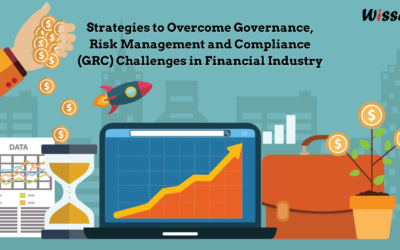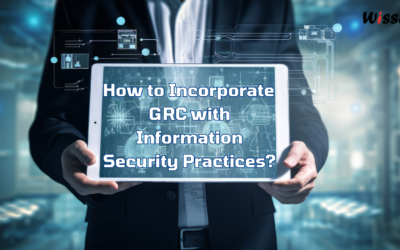The convergence of Governance, Risk, and Compliance (GRC) with data privacy is reshaping how organizations manage their responsibilities and risks. As companies handle increasing volumes of personal data and face rising regulatory demands, the need to integrate data protection into GRC frameworks has never been more critical. By aligning GRC practices with data privacy regulations, businesses can not only ensure compliance but also strengthen their overall governance and risk management capabilities. This intersection between GRC and data privacy offers a path to both regulatory adherence and enhanced operational resilience.
Understanding GRC
Governance, Risk, and Compliance (GRC) is a structured approach that aligns an organization’s governance practices, risk management processes, and compliance activities with its overall objectives. The core components of GRC are:
- Governance refers to the frameworks and policies that guide an organization’s strategic direction, decision-making processes, and accountability structures.
- Risk management involves identifying, assessing, and mitigating risks that could impact the organization’s objectives, including operational, financial, reputational, and cyber risks.
- Compliance ensures that an organization adheres to relevant laws, regulations, industry standards, and internal policies.
The integration of GRC helps companies optimize decision-making, enhance risk awareness, and ensure that compliance requirements are met efficiently and effectively.
The Importance of Data Privacy
Data privacy, on the other hand, refers to the protection of personal information and ensuring that data is collected, processed, stored, and shared in accordance with legal and ethical standards. Data privacy regulations, such as the General Data Protection Regulation (GDPR), the California Consumer Privacy Act (CCPA), and Brazil’s General Data Protection Law (LGPD), impose strict obligations on organizations to safeguard personal data and ensure transparency in how data is used.
Organizations that fail to comply with data privacy regulations can face significant financial penalties, legal liabilities, and reputational damage. Therefore, it’s crucial for companies to integrate data privacy into their broader GRC frameworks to manage risks related to personal data and ensure regulatory compliance.
The Connection Between GRC and Data Privacy
The intersection of GRC and data privacy lies in the need to manage both risks and compliance requirements related to data protection. Organizations must create a holistic approach that aligns their GRC programs with data privacy regulations to ensure they can respond to the dynamic regulatory landscape and mitigate risks associated with data breaches, privacy violations, and compliance failures.
1. Regulatory Compliance and Data Privacy Frameworks
Data protection regulations like GDPR and CCPA introduce rigorous compliance requirements for organizations that handle personal data. Companies must develop robust privacy frameworks to demonstrate compliance, including policies on data collection, processing, storage, and sharing. This involves implementing clear consent mechanisms, ensuring the security of personal data, and establishing processes for data access and deletion requests from individuals.
Incorporating these privacy frameworks into a GRC system allows businesses to automate compliance tracking and monitor adherence to data privacy regulations. By leveraging a GRC tool, organizations can streamline their efforts to comply with evolving data protection laws, avoid fines, and ensure consistency in handling personal data.
2. Risk Management in Data Privacy
Risk management is central to both GRC and data privacy. Organizations must identify risks associated with data breaches, unauthorized access, data misuse, and privacy violations. In today’s environment, data breaches are costly, not just financially but also in terms of reputation and consumer trust.
To mitigate risks, organizations should incorporate data privacy risk assessments into their broader risk management programs. This involves:
- Assessing data flows: Understanding how personal data is collected, processed, and shared within the organization and with third-party vendors.
- Identifying vulnerabilities: Detecting weak points in the organization’s systems where data breaches or privacy violations could occur.
- Mitigating risks: Implementing appropriate security measures, such as encryption, anonymization, and regular audits, to reduce the likelihood of data breaches.
A robust GRC framework integrates these privacy risks into the overall risk management process, ensuring that data privacy is not treated as an isolated concern but as part of the organization’s broader risk landscape.
3. Governance and Data Privacy Oversight
Governance is the foundation of both GRC and data privacy programs. Strong governance structures ensure that data privacy policies are effectively enforced across the organization and that there is clear accountability for compliance. Senior leadership must prioritize data privacy as part of the organization’s broader governance framework, ensuring that privacy risks are considered in strategic decision-making and risk mitigation efforts.
A well-defined GRC framework includes oversight mechanisms that support data privacy compliance. For example:
- Data protection officers (DPOs): Appointing DPOs or privacy officers ensures that there is a designated individual responsible for overseeing data privacy efforts and ensuring compliance with relevant regulations.
- Privacy committees: Establishing cross-functional committees that focus on data privacy ensures that privacy concerns are considered in product development, marketing, and operations.
- Regular reporting: Integrating privacy metrics into governance reporting mechanisms allows leadership to monitor the organization’s privacy posture and address any emerging risks.
4. Incident Response and Privacy Breach Management
The management of privacy incidents and data breaches is another critical area where GRC and data privacy intersect. In the event of a data breach, organizations must respond quickly to mitigate damage, notify affected individuals, and report the incident to regulatory authorities, as required by law.
A comprehensive GRC framework includes incident response plans that address privacy breaches, ensuring that the organization can respond swiftly and effectively. Key components of an effective incident response plan include:
- Breach detection and notification: Setting up systems to detect data breaches early and notify relevant stakeholders, including affected individuals and regulatory bodies, within mandated timeframes.
- Crisis management: Developing a communication plan to manage the reputational fallout of a breach, while addressing consumer concerns and restoring trust.
- Post-breach audits: Conducting thorough investigations to identify the root cause of the breach and implementing corrective actions to prevent future incidents.
By integrating privacy breach management into the broader GRC strategy, organizations can minimize the impact of data breaches and ensure regulatory compliance in the aftermath of a breach.
Benefits of Aligning GRC with Data Privacy
Aligning GRC with data privacy offers numerous benefits to organizations, including:
- Enhanced compliance: By embedding data privacy into the GRC framework, organizations can ensure that compliance with data protection regulations is tracked and enforced systematically, reducing the risk of non-compliance.
- Improved risk management: An integrated approach enables organizations to identify, assess, and mitigate privacy risks more effectively, ensuring that data privacy is considered as part of the broader risk management process.
- Increased operational efficiency: Automating compliance and risk management tasks through a GRC tool can streamline data privacy efforts, freeing up resources for other strategic initiatives.
- Greater accountability: By integrating privacy governance into the GRC framework, organizations can create clear accountability structures for data privacy, ensuring that responsibilities are clearly defined and enforced.
Conclusion
As data privacy regulations continue to evolve and become more stringent, organizations must take a proactive approach to managing privacy risks and ensuring compliance. The intersection of GRC and data privacy provides an opportunity for businesses to strengthen their privacy programs, align compliance efforts with broader governance and risk management strategies, and foster a culture of accountability and transparency. By embedding data privacy into the GRC framework, organizations can navigate the complex regulatory landscape, protect sensitive data, and build trust with stakeholders.
Wissda’s expertise in both GRC and data privacy makes it a valuable partner for organizations looking to enhance their data protection programs while achieving regulatory compliance. Whether implementing GRC solutions or modernizing data privacy frameworks, Wissda helps businesses create comprehensive strategies that safeguard their operations in the digital age.






0 Comments